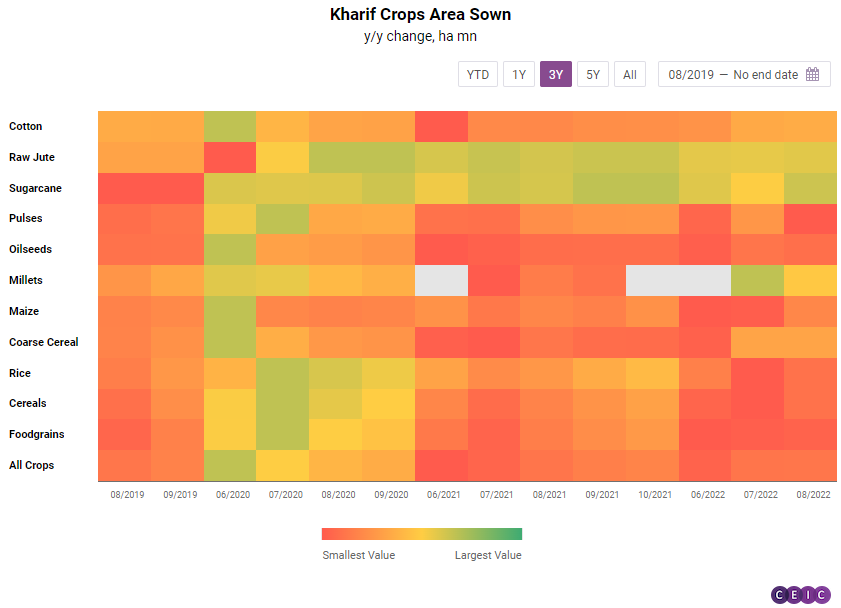
The Kharif crops in India, or summer and monsoon crops which include rice, cereals, and pulses among others, are usually sown between June and October and require sufficient rainfall. With the 2022 Kharif season soon coming to an end, the available high-frequency agricultural data and rainfall stats point to a lower acreage, meaning lower yield and, as a result, potentially higher food prices.

Since the beginning of the Kharif season in June 2022 total Kharif crops area sown has been lower compared to 2021, even though the decline has narrowed from 26.8% y/y in June to 1.7% in August. The annual decrease is particularly pronounced in August for pulses (-700,000 ha), food grains (-2.3mn ha), rice (-2.3mn ha), and cereals (-1.6mn ha). Further, despite satisfactory rainfall in July, during the last two weeks of August rainfall levels have been lower than normal.

The acreage and rainfall data can provide valuable insights when monitoring India's agriculture and the resulting inflationary effects, as they are factored in by the Reserve Bank of India (RBI) while formulating monetary policy. Hence, the potentially weaker 2022 Kharif crops season might lead to an acceleration of food inflation, which stands at 7.6% y/y in August, a two-year high. This, coupled with elevated levels of fuel prices, could push the headline indicator higher than the current 7% y/y as of August 2022.
.png?width=160&name=ceic-logo-Vector%20logo%20no%20tagline%20(002).png)
